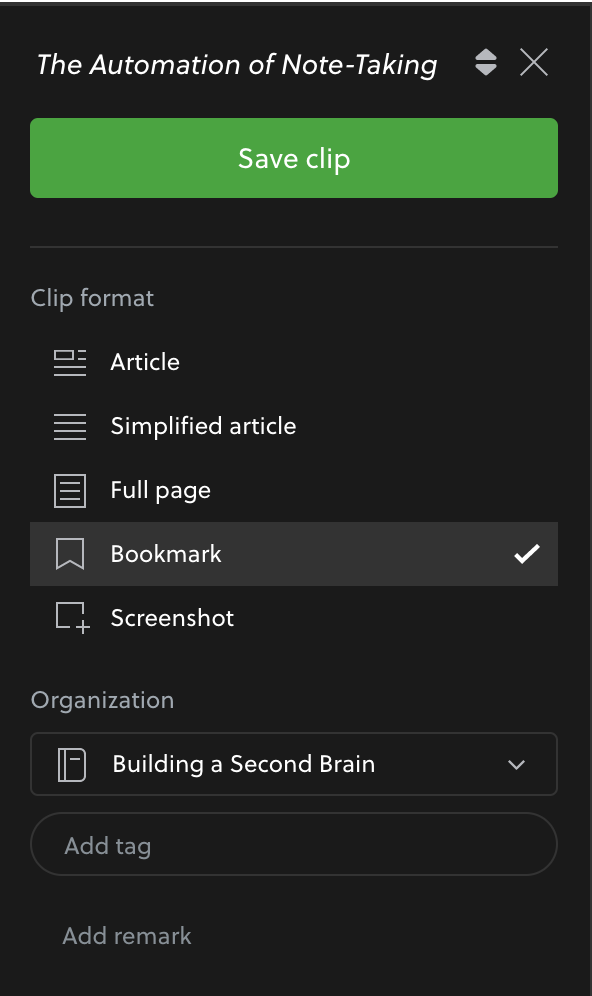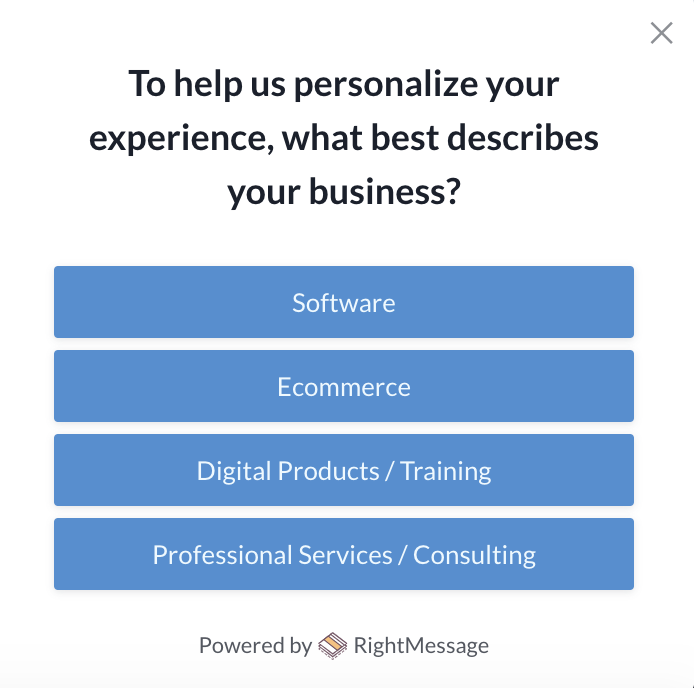In my last article, “The Customer Research Conundrum”, I covered why getting to know your audience intimately is critical for any business. It’s the basis for writing copy that draws prospects in and converts them into paying clients.
I also explained why we’ve been approaching customer research all wrong. It doesn’t have to be this overwhelming task on your to-do list that you don’t dare to touch. Launching a new product or service is stressful enough.
When you turn customer research into a daily habit, it becomes (almost) effortless. And you’ll have the right insights waiting for you when you need them.
So, how does this work exactly?
First, we’ll need to train your researcher lens, so you can identify what’s important. I’ll show you the three main areas to focus on that will act as the north star for your research habit.
Then, I’ll give you a tactical system to capture what you’re learning about your customers. You’ll be able to reliably collect and generate useful insights for your business, while building up a personal swipe file.
Finally, I’ll share seven basic rules for research to help you get started the right way.
The 3 things you must know about your customers
So, what kind of messages and insights should you look out for when stalking your customers (in a non-creepy way, obviously)? It’s three areas: pains, dreams, objections.
Your solution has to neutralize or eradicate a critical pain for your audience or help them fulfill a dream. When crafting your messages, you can target a pain point and reflect on their desires. Plus, knowing their objections – aka what keeps them from saying “hell yeah” to your offer – helps you crush any doubt in their minds.
Let’s talk this through using an example. Suppose you’re selling gift boxes for women designed for special occasions, including a mother’s day box, a new mum box, and a valentine’s box. Your target audience is daughters, sons, husbands, and friends, looking for the perfect present for the women in their life.
Here’s what you’d want to find out about your audience:
Pains and challenges
Well, life is a constant struggle. You solve one problem, and another one is lurking around the corner. So, we intuitively scan our environment for solutions to our pains. But, not every problem is important enough to get us to open our wallets. You’ll want to look for the “imma-pay-for-this” pain points.
Here are questions to ask yourself and your customers:
- What are they struggling with?
- What keeps them up at night? What’s their worst nightmare?
- What frustrates them? What do they hate? What makes them feel bad?
- What are the mistakes they are making that they could be avoiding? And what have those cost them?
- How have they tried to fix their problems? What other solutions have they tried? And how have those failed them?
For our gift box business, you might find that husbands are afraid of picking the wrong gift for their wives and having to spend the night on the couch (again). And siblings seem never to be able to agree on a present for their mum, causing text messages to get increasingly frustrated.
Dreams and motivations
Motivation is the driving force behind every action we take. You can’t create it out of thin air in your copy. But you can uncover and then reflect on your audience’s primary motivation.
The problem is that many businesses don’t go deep enough here. They stop at the most obvious level. The new vegan keto cauliflower diet for new mums (made this up) can’t stop at “I want to lose 15 pounds”. They have to go to the “I want to fit into my high school jeans again” level. It’s not only about losing weight but regaining their confidence.
Motivations run really deep. It’s the stuff you talk about with your closest friends. Stuff like…
- Feeling connected to others
- Keeping up with the Joneses
- Being the person everyone’s jealous of at the high school reunion
- Never feeling hungry again
- Loving what you see in the mirror
- Earning the respect of your boss, your mum, your dad
- Securing your family’s financial well-being
- Protecting your loved ones
- Getting interested looks from the other gender
To uncover them, ask yourself and your customers these questions:
- What are their goals? What do they want to achieve?
- Why do they want it? Why does it matter to them? And what happens if they don’t achieve it?
- What does the ideal outcome look like for them?
- What is typically going on in their life and at work when they realize that they need your help?
So, what are the motivations of the audience for our gift box business? On a surface level, it might be seeing mum smile or simply not having to rack their brain for days about what to get as a gift. Going a level deeper, we might find that it’s really about a son trying to make things right after a fight or a husband showing how deeply he cares for the love of his life.
Objections, limitations, and false beliefs
This is the stuff that keeps your audience from shelling out their hard-earned cash for your offer. It’s not only their concerns about your company (Can I trust this new business to deliver?), it’s also the belief in their own capability to solve this problem. They might think they don’t have what it takes to succeed.
When you identify these mental barriers and insecurities early on, you can help your audience overcome them. By addressing these beliefs in your copy and showing what’s actually true, you can install a whole new belief system. One that puts your prospects in the right state of mind for buying from you.
Here are questions to ask yourself and your customers:
- What are the obstacles that keep them from reaching their goals?
- What excuses have they made for not solving these problems yet? And how might those be justified?
- What are false beliefs they have about your industry?
- About themselves and their ability or capacity to achieve what they want?
- About the best way to solve their problem or achieve what they want?
- What might keep them from buying your product or service?
In our gift box business, you might have to deal with objections regarding the quality of the products included. Maybe your audience is concerned that the boxes come across as too cheesy or tacky. Knowing this, you can actively work on your messages and graphics to overcome this.
How to capture what you learn
Now that you know what insights you want to get out of your prospects and customers, I want to show you how you can capture these with as little effort as possible.
As a business owner, you’re in touch with your audience every day. Let’s leverage this work you’re already doing and make it a habit to save what you learn, so you can use it later. This is based on the principles of Building a Second Brain.
To get started, set up three notebooks in a note-taking app like Evernote for the three areas we’ve discussed above: pains, dreams, objections. Everything you learn will go here, safely stored for when you need it.
Evernote comes with two insanely practical tools that make capturing information a breeze. The first is the Evernote Web Clipper for the Chrome browser. It lets you save almost anything you see on the internet in your Evernote notebooks.
The second is your custom Evernote email address. Simply forward any email to this address, and it will land straight in your Evernote notebook.

Where to get insights?
Next, let’s look at the sources from which you can capture your insights:
- Emails: Forward insightful exchanges with prospects or customers to your Evernote email address to save them.
- Face-to-face conversations: Ask if you can record the conversation with an app like Otter or record yourself afterward, talking through your main takeaways.
- Zoom conversations: Ask if you can record the call with the in-built feature. You can upload the voice file to Otter later to get a transcript of your conversation.
- Reviews: Save insightful product reviews from Amazon or the app store. Especially reviews of your competitors’ products can be insightful.
- Quora and Reddit threads: That’s where your audience goes when they are desperate to find answers. Maybe you can even help them out by answering their questions.
- Tweets, Facebook and LinkedIn Posts: Among baby pictures and political debates, you can discover glimpses of insight into your audience’s life and everyday struggles. You’re already scrolling the feed. Save it!
- Competitor websites: If you aren’t stalking your competition yet, then it’s a great time to start. Their testimonials and case studies can tell you what the audience values about them.
When should you be capturing?
In the very moment something sparks an insight. It just takes a few extra seconds to take a screenshot, record on Otter, or old-school copy+paste it into your Evernote notebooks. If you try to remember to do it later … you won’t. It will be lost.
This can feel odd at first because it’s a new habit that’s forming. In the beginning, you’ll have to consciously make yourself act. It will get easier over time and become an automatic process. I can promise you that.
Automate your customer research
To take this one step further, there are ways to make customer research happen while you’re sleeping. Here are three options:
Ask for replies
This one’s super simple and implemented in minutes. Whenever you’re sending a newsletter to your list or publish a blog post on your site, add a question at the bottom. Ask for their thoughts and opinions, invite them to reply to you. This can trigger insightful conversations.
Thank you surveys
When someone signs up for your newsletter or downloads your lead magnet, it’s the ideal time to ask them a question. At that moment, they are already engaging with you and more likely to respond. Instead of sending them to a dead-end thank you screen, direct them to a one-question survey. You can set this up with a tool like Typeform or Google Forms.
Ask one of two open-ended questions:
- What was going on in your life that brought you to X today?
- Now that you have X, what are you planning to do with it? … how are you going to use it?
The first question explores your prospect’s pain points and the second explores their goals. If you’ve subscribed to my newsletter, then you’ll have noticed that I use a variation of this question to find out what my new subscriber is most interested in hearing about.

And another tip: After they’ve answered the question, redirect them to another useful resource like a blog post. You shouldn’t ever lead your new prospect or customer into a dead end.
On-site polls
If your website traffic compares more to an inner-city highway than a country road, then an on-site poll could come in handy to understand who’s visiting your site and what they’re looking for.
One option is to have a little pop up on the bottom right of the screen that asks a multiple-choice question. For example: “What describes you best?” lets your audience self-segment. RightMessage is a tool that helps you set this up.

Another option is exit surveys. These pop up when a visitor is showing the intent to leave (cursor moving to the top part of the screen). Although more intrusive, they can help you understand what might be missing on your site and which questions remained unanswered.
Tools like Qualaroo and Hotjar help you ask the right questions at the right time on your website.
With a little up-front effort to set up customer research automation, you can sit back and let the insights roll in.
7 basic rules for customer research
Whether you’re the one capturing the insights or an automatic tool, there are a few principles to keep in mind.
- Stay curious and open-minded. Customer research is an exploration. If you’re only looking to confirm an opinion you’ve already formed, you’re getting it wrong.
- Whenever possible, capture the exact words of your audience. Refrain from summarizing it in your own words. You’ll want to use the best messages verbatim in your copy.
- Look for sticky messages. If something is memorable, surprising, or triggers emotions in you, then it’s worth saving.
- Capture specifics (like numbers). Concrete examples produce more memorable and impactful copy than abstract messages.
- Dig deeper. When chatting with a customer, she’ll likely stay on the surface level. An innocent “Can you tell me more about that?” helps you uncover what’s underneath.
- Don’t ask questions that aren’t directly tied to a goal. You aren’t asking questions for the sake of asking them. Be clear about what you plan on doing with the answers.
- Pay attention to patterns and repetition. Once you start capturing insights, you’ll likely see some patterns emerge. If many people repeat a version of the same thing, then it’s probably important.
Is forming a research habit worth it?
I can’t write an article about a new habit without throwing in at least one James Clear quote.
Changes that seem small and unimportant at first will compound into remarkable results if you’re willing to stick with them for years.
Establishing a research habit by consistently capturing what you’re learning about your audience is one of the most important steps a founder can take when building a business.
Instead of letting information slip by, you’ll build a steadily growing treasure trove of insights into your audience’s pains, dreams, and objections.
With an established research habit, you’ll be able to …
… write copy fast as you already know what your audience is looking for.
… give your copywriter the ammunition to take conversion rates to new heights.
… optimize your products and services based on your customer’s feedback.
… come up with new solutions that solve even more pain points.
… take the guesswork out of where your business should be headed.
… build a deeper connection with your audience because you truly understand them.
Do you agree? What questions do you have? This is new territory, and I’d love to hear your thoughts. Send me a carrier pigeon or email (julia@juliasaxena.com). I’d be happy to jump on a call and discuss how you can implement a research habit in your business.






